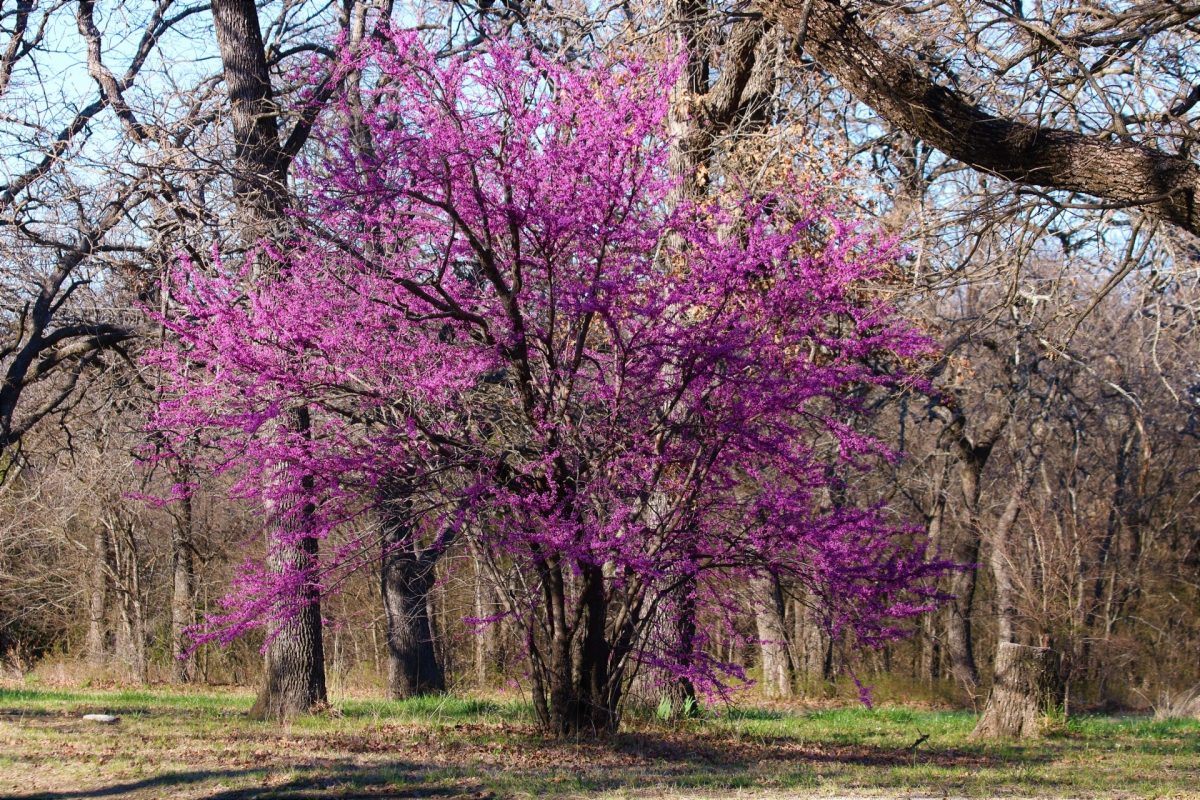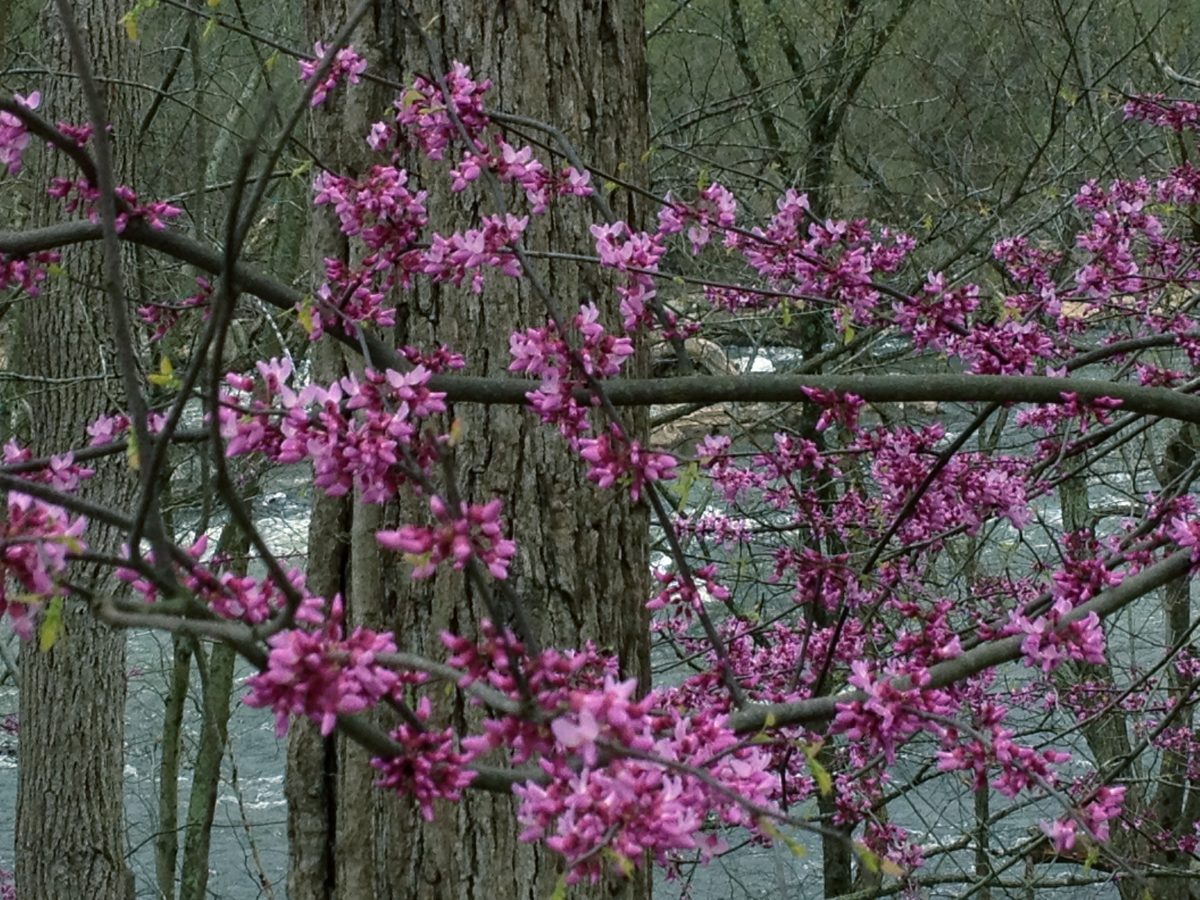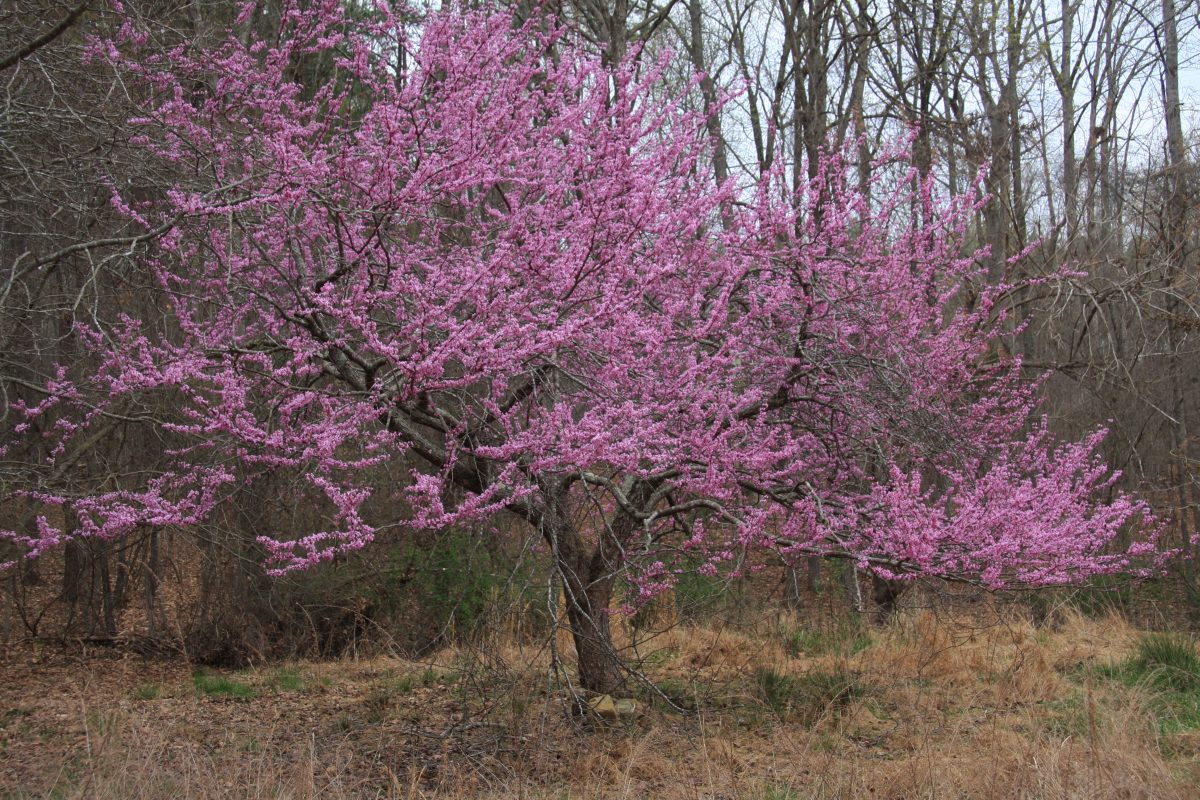
Whether you’re a seasoned gardener or just starting out on your green thumb journey, consider adding this striking tree species into your landscaping plans! With proper care and attention, you’ll be rewarded with year-round visual interest – from early spring blossoms right through autumn leaf drop.
Physical Description
My personal experience with the Red Bud tree, particularly in Ontario, has given me some unique insights. Let’s take a closer look at its physical features.
The Red Bud Tree, scientifically known as Cercis canadensis, is an appealing spectacle of nature that you’d definitely love to have in your yard. This species showcases a spectacular display of color throughout different seasons.
This deciduous tree usually grows between 20-30 feet tall and around 25-35 feet wide, creating an almost round silhouette when matured. A markdown table for the average dimensions would be:
| Average Height | Average Width |
|---|---|
| 20-30 ft | 25-35 ft |
In springtime, it’s renowned for its striking rosy pink flowers that envelop its bare branches even before leaves make their appearance. These blossoms are small but numerous and typically appear directly on the stems and branches forming clusters.
As summer approaches, heart-shaped leaves start growing which boast rich green coloration providing a refreshing sight against any backdrop. The leaf size ranges from 3 to 5 inches long.
Come fall season though these verdant leaves don’t shy away from adding more drama! They transform into hues of yellow or sometimes golden-yellow before dropping off – making every phase of this tree worth watching!
The bark also holds aesthetic value; it’s dark grayish-brown with deep furrows over time creating distinctive patterns visible especially during winter months after leaf drop-off.
Lastly let me not forget about its fruit – these are flat leguminous pods about two to four inches long maturing during late summer: initially green then turning brown upon ripening staying on trees well into winter adding another element to landscape beauty.
To sum up:
- Spring brings rosy-pink flowers
- Summer offers vibrant green foliage
- Fall surprises us with yellow/golden hues
- Winter reveals textured bark pattern
With all these characteristics combined together – I believe you’ll agree with me – The red bud truly earns itself a place among Ontario’s most visually stunning native trees!

Growing Conditions
In my experience as a landscaper, understanding the growing conditions of the Red Bud Tree in Ontario is crucial. It’s all about ensuring your tree thrives and contributes to that stunning Canadian curb appeal we all strive for.
Firstly, light exposure plays a vital role in nurturing this native beauty. I’ve found that Red Bud Trees prefer full sun to partial shade environments – which means they need at least six hours of sunlight daily. They’re adaptable, but you’ll see more vibrant colors with adequate light.
Moving onto soil, it’s important to note these trees aren’t too picky but do have preferences. The soil should be well-draining yet able to retain some moisture. A loamy or sandy soil type tends to work best for them.
| Soil Type | Effectiveness |
|---|---|
| Loamy | Best |
| Sandy | Good |
| Clay | Fair |
As for temperature, keep in mind Ontario’s unique climate pattern! While they can withstand cold winters (down as low as -34°C), budding may be impacted by late frosts due its early blooming nature – something us Canadians are no strangers too!
Lastly, let’s touch on watering needs:
- Newly planted trees require frequent watering until established.
- Mature Red Buds appreciate water during dry periods.
- Overwatering can lead to diseases such as root rot so make sure not overdo it!
Remember folks; every plant has its own set of requirements and quirks – even within species there are variations! However if you stick close these general guidelines chances are high your red bud tree will flourish beautifully right here home province Ontario!
Notable Characteristics and Uses
I’ve always been fascinated by the beauty of the Red Bud tree, especially when it’s found thriving in Ontario. It’s an absolute showstopper in any Canadian landscape, including mine.
The Red Bud tree, or Cercis canadensis if we’re getting scientific, has a number of remarkable characteristics. It boasts stunning heart-shaped leaves that range from deep green to maroon. But what really steals my breath away is its spring display – clusters of vibrant pink flowers bloom directly on its branches and trunk! This phenomenon is known as cauliflory and it certainly adds a unique touch to my landscaping projects.
Here are some other features that make this tree stand out:
- Height: Mature trees reach up to 20 feet
- Spread: They have a spread similar to their height
- Zones: Hardy from USDA zones 4 through 9
| Feature | Value |
|---|---|
| Height | Up to 20 feet |
| Spread | Similar to height |
| Zones | USDA zones 4 through 9 |
Beyond its striking aesthetics, the Red Bud Tree offers practical uses too. Its wood is dense and heavy making it suitable for small woodworking projects like tool handles or fence posts.
Additionally, these trees are beneficial for local wildlife. Their seeds provide food for numerous bird species during harsh winters while their branches offer shelter.
But I must admit – as someone who loves creating beautiful spaces – the primary reason I adore incorporating Red Buds into my designs lies in their visual appeal rather than utilitarian value.
Their versatility complements various garden styles from rustic woodland gardens (they’re native after all!) right through modern minimalist landscapes where they act as focal points with their distinctive silhouette against stark lines.
So whether you’re looking at aesthetics or functionality, there’s no denying: The Red Bud Tree holds an esteemed place among Ontario’s flora!

Common Diseases and Pests
The world of red bud trees in Ontario is not without its challenges. As a seasoned landscaper, I’ve come to recognize that while these trees are remarkably resilient, they’re also susceptible to certain diseases and pests.
One common disease we often encounter is Canker Disease. This fungal infection can cause branches or the entire tree to die off if it’s not treated promptly. It manifests as sunken areas on the bark which eventually grow larger causing sections of the tree to wilt or die.
Next up, let’s talk about Verticillium Wilt. This soil-borne fungus targets the vascular system of our beloved red buds leading to wilting leaves and even death in severe cases. Early detection is key here; look out for yellowing leaves that eventually turn brown.
Now onto pests – it would be remiss if we didn’t mention one persistent troublemaker: The Redbud Leaffolder. These little critters fold redbud leaves over themselves for protection while they feed on them – hence their name!
Another pesky intruder you’ll want to keep an eye out for is the humble yet destructive Treehopper insect which feeds on sap from tender twigs causing stunted growth or deformities in your Redbuds.
| Common Issues | Symptoms | Solutions |
|---|---|---|
| Canker Disease | Sunken areas on bark, wilted branches/sections. | Prune affected parts & use fungicides |
| Verticillium Wilt | Yellowing then browning leaves. | Use resistant varieties & ensure good water management |
| Redbud Leaffolder | Folded-over leaf structures. | Use natural predators like birds or apply mild pesticides |
| Treehopper Insect | Stunted growth/deformities due feeding damage. | Manual removal early season / pest-specific insecticides |
Remember this list isn’t exhaustive but provides a great starting point when assessing your own redbud trees’ health here in Ontario.
Planting and Care Tips for Red Bud Trees
I’ve planted countless Red Bud trees throughout Ontario. Let me share some of the top tips I’ve picked up over the years.
Firstly, timing is critical when planting these beauties. Ideally, you should plant your Red Bud tree in early spring or fall, avoiding the hot summer months.
When it comes to picking a spot for your tree, they’re pretty adaptable but do prefer a sunny location with well-drained soil. They can handle partial shade too if needed.
As for care after planting? Watering is essential during its first year – that’s when roots are getting established and need plenty of hydration to grow strong! Here’s my recommended watering schedule:
| Month After Planting | Water Frequency |
|---|---|
| First 3 Months | Weekly |
| 4th to 12th Month | Every Other Week |
After this initial year, you can taper off watering gradually unless there’s an unusually dry period – then it’ll appreciate some extra water!
Now let’s talk about pruning – It’s best done in late winter or early spring before new growth starts but after the worst of winter cold has passed.
Here are my top tips:
- Remove any dead branches
- Prune out cross branches
- Shorten lower limbs for clearance
- Thin out small twigs on heavily branched limbs
Lastly don’t forget about fertilization! An annual application of slow-release granular fertilizer helps keep these trees at their best. Just be sure not to overdo it – excessive fertilizer can harm more than help.
So there you have it! My guide on how best to plant and care for your very own Ontario-grown red bud tree.
Conclusion
I’ve covered a lot of ground in this article about the Red Bud tree Ontario, and I hope you’ve found it both informative and interesting. It’s clear that this native species is not just beautiful but also hardy, making it an excellent choice for Canadian landscapes.
One thing that really stands out to me is the adaptability of the Red Bud tree. Its ability to thrive in various soil types and its resilience against harsh winters proves how versatile it can be in different settings. If you’re looking for a reliable yet stunning addition to your landscape design, you can’t go wrong with the Red Bud.
However, let’s not forget about its captivating aesthetic appeal either:
- Bright pink blooms in spring
- Heart-shaped leaves changing from green to yellow as seasons shift
- Winter silhouette adding structural interest
These features truly set the Red Bud apart from other native trees here in Ontario.
When we talk about enhancing curb appeal or simply adding natural beauty into our spaces – be it residential or commercial – planting a red bud could serve multiple purposes at once. It’s relatively low-maintenance too which makes it an ideal pick especially if you have limited time for garden upkeep.
In my years of experience running my landscaping company here in Canada, I’ve seen how well-received this tree has been among property owners who value both aesthetics and sustainability. And honestly? The feedback isn’t surprising at all given what we now know about this remarkable species.
To sum up: whether you’re looking to make a bold statement on your front yard or wanting something less conspicuous yet equally charming for your backyard retreat – consider giving red bud trees a spot!
Colin Macmillan is a seasoned entrepreneur and the CEO of Riverwood Landscape, a leading landscaping company based in Canada. He has been at the helm of the company since leaving high school, demonstrating his strong leadership skills and business acumen.
Colin’s expertise lies in various aspects of landscaping, including lawn care, interlocking, sod installation, and commercial maintenance. His hands-on approach and dedication to the craft have been instrumental in building Riverwood Landscape into a reputable brand.
One of his most notable achievements is the creation of a successful landscape franchise that services multiple locations. This accomplishment underscores his strategic thinking and ability to scale operations effectively.
Colin has also had the privilege of working with Guelph Hospital for landscaping and maintenance, a testament to the trust and reliability that his company has earned over the years.
His professional mission is to offer the best services and experiences for customers, a goal that he tirelessly pursues. Colin’s commitment to excellence and customer satisfaction continues to drive the growth and success of Riverwood Landscape.








